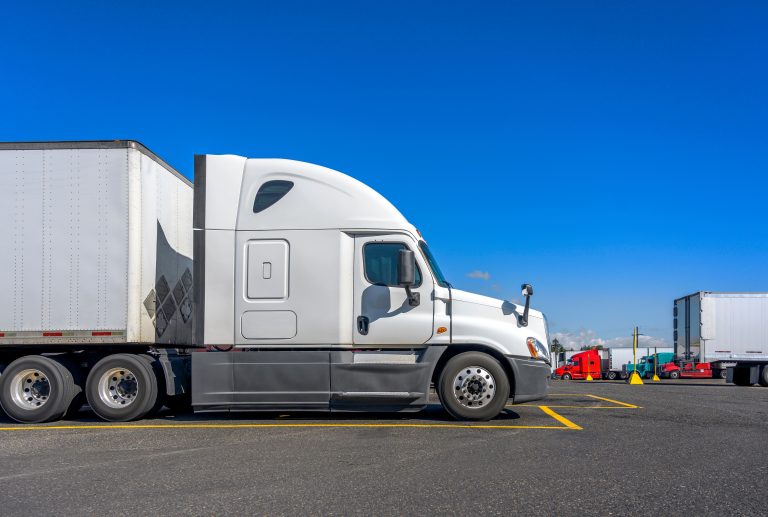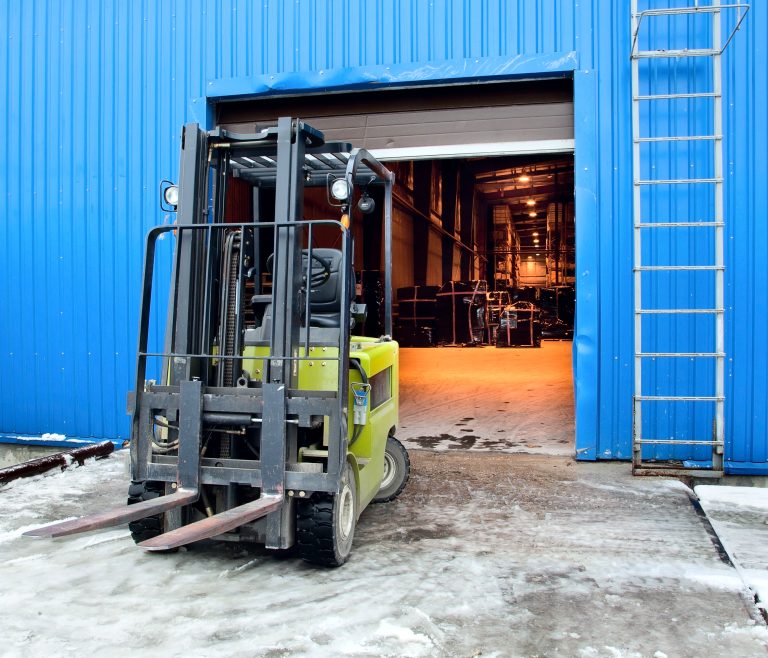In the shipping industry, technology has a tremendous impact on the transportation of goods. One of the most significant changes the industry has undergone is the increasing popularity of spot freight.
As the shipping industry moves forward, it seems likely that this trend will only continue to accelerate.
Most companies ship using contract freight, in which companies engage a shipping company for their long-term shipping needs at an agreed-upon rate, usually for at least 12 to 24 months.
In contrast, spot freight involves collecting quotes from several different logistics companies, then choosing the best rate for an individual shipment.
While spot freight might sound like it’s a last-minute arrangement, that isn’t always the case. Companies can make spot freight arrangements at any time, and many such arrangements are made weeks or months before the shipment.
Payment isn’t always required at the time, either, with many companies offering credit up to 90 days out.

When comparing spot and contract freight, the most significant consideration is price vs. predictability. Spot freight gives you the chance to choose the best price at a given moment for a specific load. This option may end up costing far less than an agreed-upon contract rate.
However, with a contract rate, you know how much you’ll need to pay during a given window of time, making it easier to plan your budget.
While spot freight is increasing in popularity, it is far from immune to rate fluctuations.
According to the Journal of Commerce, shipping prices are up 48% compared to last year. While contract rates may have initially been higher than the spot freight rate over the past year, contract rates would have been considerably cheaper over the past year.
One additional factor to keep in mind is that spot freight can involve much more legwork on your end. You may need to secure multiple carriers to complete your shipment, which means you may spend more time on your arrangements, even as you save money.
There are several situations in which spot freight works best for both the shipper and the carrier. Here are some common ones:
When a shipment needs to go out as soon as possible, it usually requires special arrangements. In these cases, the delivery date becomes the most important consideration, often eclipsing price.
When a company considers taking on a new client, they may offer to make one or two shipments at a spot freight rate as a trial period. These rates may be below the contract rate as a means of attracting business.
One-time events don’t usually work well with contract shipping due to their short-term nature. Instead, shippers will make spot freight arrangements well before shipping to take advantage of the best rates.
If a carrier has empty space on a truck that is headed to the destination where the shipper needs to ship their goods, they may be willing to offer a lower rate for a one-time spot freight shipment.
When a problem arises during the normal contract shipping process, spot freight can provide a quick way for shippers to overcome delays, from weather to breakdowns to overbooking.


What is spot freight, and how can I take advantage of it? When you want to find out, contact the experts at R2 Logistics. We’ll leverage our industry-leading technology to make sure your freight gets delivered when you need it.
Input your search keywords and press Enter.
Along with our other available capabilities, R2 also offers your business intermodal services. If you would like to utilize this service or explore its options, our experienced staff can assist you in taking advantage of its possibilities. Let us help you find the most efficient and manageable cost for your shipment.
Intermodal Freight Benefits
– R2 associates are on hand 24/7 to assist in any matter
– We can accommodate cost effective solutions for any number of loads you may have
– Watch your shipment move from Point A to Point B online
– Multimodal transition is done seamlessly as your needs alter
– A contracted capacity with the ability to move your freight in the U.S., Canada, and Mexico
As supply chain complexity is in constant evolution, ingenuity is vital for gaining a competitive edge. Our expert associates provide the ability to appraise your logistics network to expand and apply more cost effective and service oriented solutions. Do you have just one requirement or several? The R2 team is only a phone call away to help position your company above the competition
R2’s Managed Transportation Program Includes:
– Collaboration – your business is our business. We will aid in the arrangement of meeting your supply chain demands with corporate guidelines
– Evaluation of your distribution system and design of the most cost effective network
– Providing transportation direction to bring control to your shipping budget and improving response time
With R2 Logistics’ excess of contracted carriers, the options are endless to find the right solution to move your freight. We also understand that getting it moved isn’t your only concern. That’s why it’s our first priority to choose the right option for you.
After the selection has been made we begin the process of following the freight from start to finish. At least 5 check calls are made for each shipment to ensure its security, and if you ever have a question, we’ll have an answer.
Truckload Freight Benefits
– We’re committed to you and your business – we’re available 24/7
– We set you up with your ONE and ONLY account representative
– We are not bound by U.S. borders – we make it easy for you to move shipments to and from Mexico and Canada
– Follow your shipments quickly and easily online
– Countless options – whether it’s for one load or for your entire supply chain, R2 has the solution you’re seeking
Knowing when to use Less Than Truckload shipments increases productivity, reduces freight spend, and streamlines freight shipping. LTL is ideal when freight doesn’t require the use of an entire trailer and weighs between 150 and 15,000 pounds.
Our relationships with the nation’s leading LTL carriers, allows R2 to pass our rates to our customers. Beyond our competitive rates, we have simplified the LTL shipping process with our innovative and game-changing Transportation Management System.
Using our TMS, shippers can realize the rewards from the moment they log on. With R2’s cloud-based TMS, shippers have access to real-time pricing, capacity across multiple carriers, and actionable reporting analysis.
LTL Freight Benefits with R29
– Analyze your logistics network and improve its current state
– Competitive rates pre-negotiated with our network of LTL carriers
– Ability to instantly quote, book, track and manage all shipments with R2 TMS
– A dedicated LTL freight expert to help with any of your freight questions
– Consolidated invoicing for all your shipments
– Unparalleled reporting capabilities making performance and cost analysis simpler than ever
We can understand that there’s never enough time in the day. If you have a shipment that should have been moved 24 hours ago we have the means of getting it there now. We have a multitude of contracted expedited and air freight carriers who can move your freight for you in a safe and reliable fashion. Let us do the work for you. We will track the shipment and let you know when it has arrived at its destination.
Expedited and Air Freight Benefits
– Dedicated dispatch and freight management from all R2 associates
– Extra precaution and 24/7 supervision for sensitive shipments
– ONE point of contact to answer any and every need you may have
– Customized options allowing you to utilize the best combination of service and value
– Accessibility to a surplus of different vehicle or trailer types as well as single and team driver
With a wide range of Ocean Freight services covering multiple equipment types and consolidation services, we ensure your cargo reaches its destination in the most cost-efficient manner. Our long-term relationships with ocean carriers allows R2 Logistics to provide both Less-Than-Container Load (LCL) and Full-Container Load (FCL) shipments. Our in-house team of international freight specialists manage your freight and also offer customs clearance and tariff classification.
R2’s Ocean Shipping Benefits
– Competitive rates pre-negotiated with our network of ocean carriers
– Use FCL shipping for valuable cargo that you wouldn’t want with another person’s shipment. FCL is also a good option if you need to ship loads of 12+ pallets
– LCL shipping means you share container space with other cargo. This can be a more cost-effective option for shipping smaller loads overseas.
– The ease of working with one company for all your logistics needs—including ocean, air, customs brokerage, trade compliance, and surface transportation
Simply put, Reverse Logistics is the return of products to a manufacturer or distributor from their customer. A well-organized Reverse Logistics program will result in direct benefits such as improved customer satisfaction and reductions in warehousing and distribution costs. Studies show 8-9% of all customer shipments are returned and 25-30% of e-retail shipments are as well. Managing Reverse Logistics costs are critical to running an efficient Supply Chain.
RA Numbers & Accounting
RA numbers are captured in the R2 TMS and linked with BOL numbers and Carrier PRO numbers resolving accounting issues due to missing RA numbers.
Damage & Recouping
Strong relationships with R2’s network of LTL carriers ensures shipments are handled with care.
Cost
The R2 TMS will select the most effective carrier for both transit time and cost. Customers are no longer held “hostage” with only one carrier choice.
When you’re hauling a shipment that’s oversized and overweight, attention to detail is crucial. The attention needed is exactly what you will receive with R2. With our vast network of nationwide carriers we can solve the problems you may face with your specialized shipment. Safety always plays a major role in any shipment moved under our watchful eyes. This makes us the easy choice for your next shipment requiring special handling.
Flatbed & Specialized Freight Benefits
– 24/7 dispatch supervision from start to finish
– Guaranteed certified and insured carriers used for every load
– ONE account executive available for any assistance needed
– Online tracking and document retrieval capability
– Shipping solutions designed to meet your unique needs